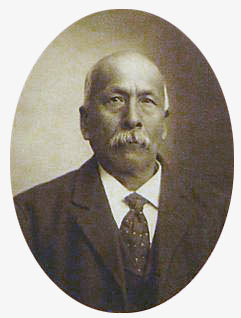Wabanaki Snowshoes
Details:
1. Penobscot or Passamaquoddy Snowshoes,
c. 1900
Loaned by Kim and Brenda Cartwright
2. Maine-Style Snowshoes, c. 1900
Loaned by Kim and Brenda Cartwright
3. Penobscot Racing Snowshoes, c. 1900
Loaned by Kim and Brenda Cartwright
4. Maine-Style Snowshoes, 19th Century
Loaned by Kim and Brenda Cartwright
5. A. M. “Mellie” Dunham Snowshoes, 1909
Loaned by the Maine State Museum
6. Penobscot Square-toed Snowshoes, 19th
Century
Loaned by the Abbe Museum
7. Passamaquoddy Snowshoes, c. 1900
Loaned by the Maine State Museum
8. Maliseet Snowshoes, 1872
Loaned by the Peabody Museum of
Archaeology and Ethnology, Harvard
9. Penobscot Snowshoes, 19th Century
Loaned by the Abbe Museum

Passamaquoddy Representative to the
Legislature, 1907, Maine Historical Society,
Image Number 7195
Anthropologist Frank Speck and amateur ethnographer Fannie Hardy Eckstorm documented Penobscot snowshoe-making in the early 1900s. Both noted that Wabanaki snowshoes were about three times as long as they were wide, with tails of five or more inches. Toes could be square or round but, unlike other sub Arctic snowshoe styles, the toes were never turned up. Nor were pairs made with lefts or rights.
Wabanaki artisans made snowshoes not only for their own use for winter hunting and gathering, but to meet the needs of sportsmen, lumbermen and recreational snowshoers. Indian agents, such as George Hunt in Old Town supplied sporting goods stores throughout New England and outdoor enthusiasts with Penobscot snowshoes in a variety of sizes and grades, ranging from coarse to fine.
Maine was the center of snowshoe production from the 1850s to the 1940s and Wabanaki snowshoes were renowned for their superb craftsmanship and durability. Snowshoes were made not only by Wabanaki artisans, but by non-natives, who borrowed traditional Native American designs and construction techniques. Best known among this group were A. M. “Mellie” Dunham and W.F. Tubbs of Norway, Maine. Unlike their Native American counterparts, their shoes did not have reinforced harness holes and toe holes – attributes of a Native American crafted snowshoe.
“Nov. 26, 1904
Mr. M. L. Fernald
Cambridge, Mass.
Dear Sir:
We have not been able to get any Caribou Hides for a long time, and have no Snowshoes made from such stock. The best we could do, would be to use heavy fall Buck Hide, which is secod only to Caribou and better than a thin Caribou Hide. If desired, we could get you the four pairs with strong frames, and we think they would prove satisfactory. For a man weighing 190 lbs., we would say that a 15 x 48 in. Shoe would be about the right size, while a 14 x 46 in. would be large enough for a person weighting 140 or 150 lbs. and perhaps one of 160 lbs. weight. We enclose our price list.
Yours truly
Hunt & Stowe
Old Town, Maine”
